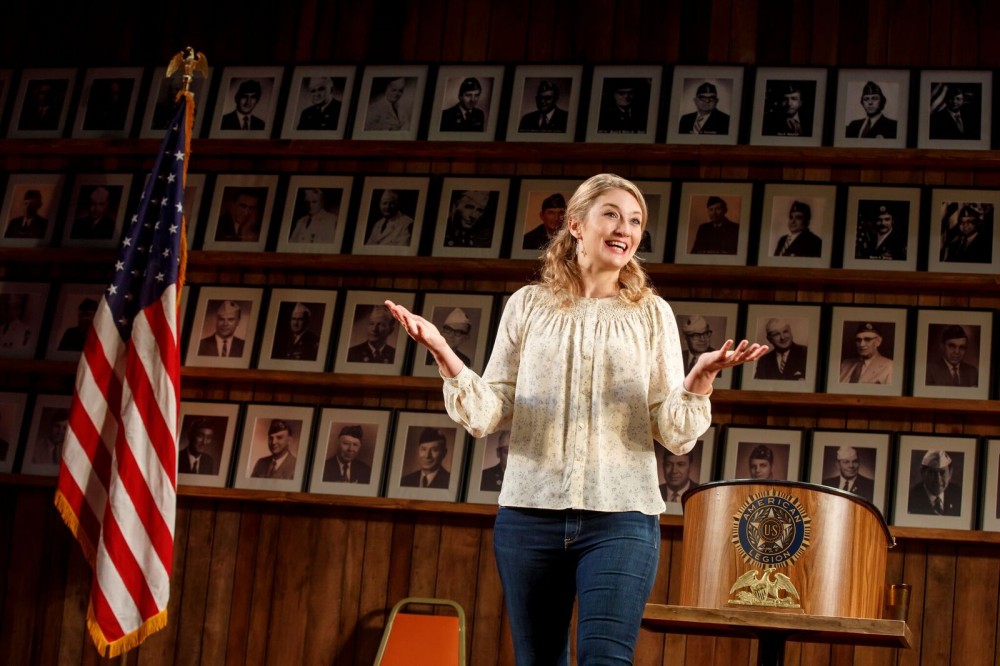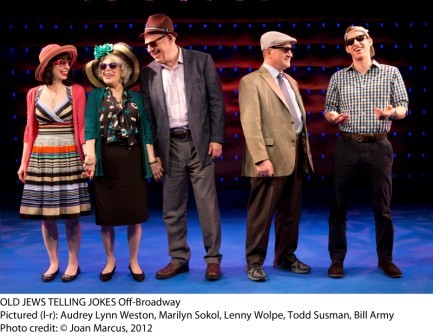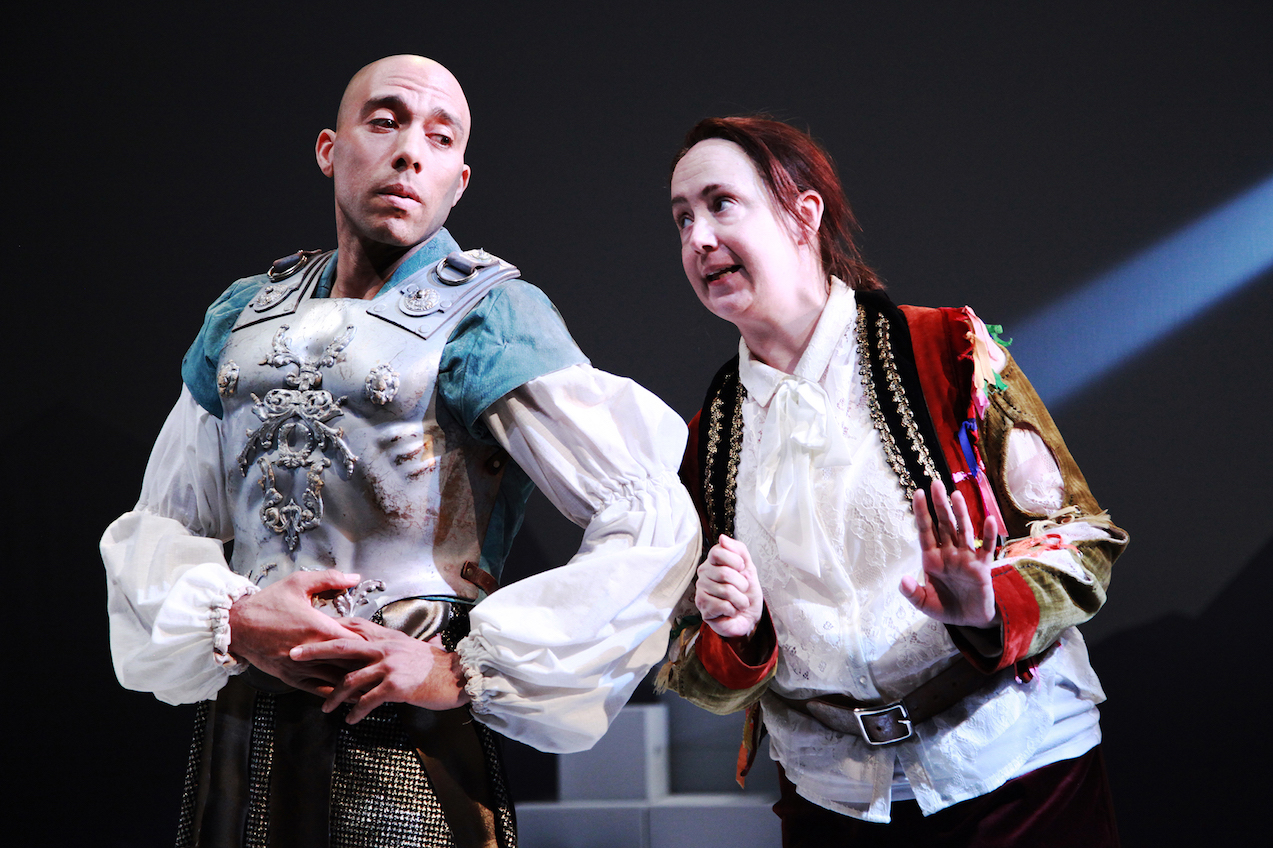By Marilyn Lester . . .
Economic fragility is a harsh reality, but it certainly can make for powerful theater. Such was the Panic of 1837, a grinding downturn that became the foundation for Dion Boucicault’s stage melodrama, The Streets of New York. To this tale of good and evil, wealth and poverty and love triumphant, Irish Repertory Theatre Artistic Director, Charlotte Moore, has added original songs penned by her, to an adapted script. Moore also directed. It’s a handsome production that handily translates the twisting, turning subplots of the original to understandable and delectable enjoyment. The attractive cast of 12 actors are delightful to hear and watch as they spin out Boucicault’s story with passion and conviction.
Boucicault wrote The Streets of New York (also known as The Poor of New York) in 1857, based on the French play Les Pauvres de Paris (Edouard-Louis-Alexandre Brisbarre, Eugene Nu). The author was well-acquainted with the American style of theater and adapted his work to be fast-paced, fully embracingthe usual melodrama tropes of clear-cut morality and heightened theatricality. Modern audiences can find much in Moore’s canny adaptation, with its bits of comic relief and Dickensian-like social commentary, although there are no ghostly visitations here. Indeed, we can relate—some things never change. There’s still the 1% and the rest of us.
The play begins with a prologue, set in 1837; investors are panicking and a bank run is dangerously near. A step ahead of the game, the venal Gideon Bloodgood (David Hess) empties his bank, preparing to abscond with the cash. Suddenly, sea captain Patrick Fairweather (Daniel J. Maldonado, also playing the dual role of a shadowy Duke), about to ship out, appears and implores Bloodgood to keep his considerable life savings safe for his family. Witnessed by clerk Brendan Badger (Justin Keyes), Bloodgood agrees, but the apoplectic Fairweather promptly drops dead. Bloodgood pockets the funds while Badger slyly purloins the receipt of the transaction. Bloodgood buys Badger’s silence, unaware of the theft. Fast forward to The Panic of 1857 and therein the complications born of that earlier circumstance play out in two acts.

Bloodgood, now a widower, and rich as Croesus, continues to accumulate more wealth, lavishly bestowing pots of cash on his spoiled, avaricious and scheming daughter, Alida (Amanda Jane Cooper). Captain Fairweather’s widow, Susan (Amy Bodnar) and her children Lucy (DeLaney Westfall) and Paul (Ryan Vona), once monied, are now destitute as a result of Bloodgoods dishonesty. So is Mark Livingston (Ben Jacoby), a goodly man but an unwise spendthrift. For them, as it was viewed in the day, falling into reduced circumstances was downright shameful. Livingston is in love with Lucy, who returns those feelings, but in an O. Henry plot twist, is about to marry the cunning Alida. The lower-class heart-of-gold Puffy family, Dolly (Polly McKie), Dermot (Richard Henry) and daughter Dixie (Jordan Tyson) are the cheerful, optimistic poor folk, always ready to lend a hand no matter what. Into this mix returns the clerk, Badger, who holds the key to making things right—and that indeed does happen, but not before the famous climactic fire scene abets that end.
While it’s questionable if the songs really add to the play (an edited version of the original would neatly stand on its own), the casting was absolutely perfect. In a character role, Price Waldman as Edwards, the Bloodgood butler, was absolutely priceless. The arch of a raised eyebrow communicated delicious, comic volumes with the subtlest of movement. As to the songs, they were pleasant enough, with the opening number “The Streets of New York” sounding very Sondheim-esque. Several other numbers, i.e. “Villains,” were reminiscent of prime Gilbert and Sullivan. A standout performance was Cooper’s scandalous “Oh, How I Love Being Rich,” with the actress camping up her villainess to the max. While all the voices were pleasing to the ear, Jacoby’s tenor was stellar. Mark Hartman is credited as music director and co-orchestrator, with Yasuhiko Fukuoka associate conductor and co-orchestrator. The music was delightfully played by cellist Melanie Mason, violinist Joel Lambdin, bassist Sean Murphy, harpist Karen Lindquist and Jeremy Clayton on woodwinds.
A clutch of wonderfully creative artists also contributed to the visual enjoyment of The Streets of New York. Barry McNabb’s tightly executed choreography was fluid and graceful, while costumes by Linda Fisher ranged from the lush and breathtakingly gorgeous to the evocative plain-clothes of the down-and-out. An ingenious set by Hugh Landwehr, literally unfolded to reveal worlds both lavish and spartan. Michael Gottlieb designed effective lighting, particularly for the fire scene, and sound was balanced and well-designed by M. Florian Staab.
The Streets of New York has a run-time of 2 hours and 20 minutes including a 15-minute intermission. The production is scheduled through January 30, 2022. PLEASE CHECK THE IRISH REP WEBSITE FOR COVID-RELATED CLOSURES. www.irishrep.org or 212-727-2737
The Irish Repertory Theatre is located at 132 West 22nd Street, New York, NY 10011
Photos: Carol Rosegg






















